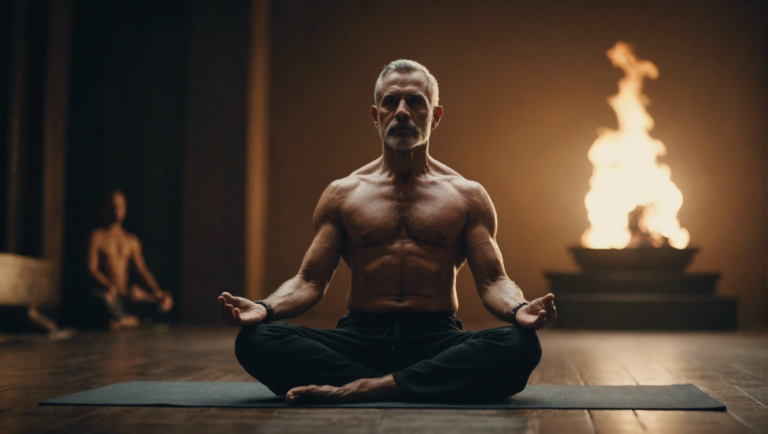Celebrating Wellness: Insights Into International Yoga Day
The Significance of International Yoga Day in Promoting Global Wellness
The Role of an Annual Global Event in Wellness Advocacy
Raising awareness and encouraging the adoption of healthier lifestyles stand at the heart of a worldwide initiative celebrated annually on June 21st. This date, designated by the United Nations, serves not only as a celebration but also as a pivotal moment in promoting the comprehensive well-being of individuals across the globe. The emphasis on mind-body harmony and the encouragement of a balanced lifestyle resonate through this event, shedding light on the ancient practice that has transcended centuries and cultures to become a cornerstone of wellness philosophies worldwide.
Bridging Cultural Divides Through a Shared Practice
Yoga, an ancient practice originating from India, has become a global phenomenon, thanks in part to the spotlight cast upon it during this yearly celebration. The essence of yoga transcends physical exercise, delving into realms of mental and spiritual rejuvenation and connections. By promoting yoga, this day not only advocates for physical health but also for mental peace, stress reduction, and a deeper sense of global unity. In an era where the world is increasingly fragmented, the unifying celebration of this practice serves as a bridge, connecting diverse cultures and communities in pursuit of common wellness goals.
Enhancing Understanding and Acceptance
One of the profound impacts of this global observance is its ability to enhance understanding and tolerance among individuals. Through the communal practice of yoga, participants gain insights into its rich historical roots and philosophical underpinnings, fostering a deeper appreciation for cultural diversity and heritage. This day serves as a reminder that wellness and health are universal aspirations, transcending geographical, cultural, and linguistic barriers.
The Impact on Public and Personal Health
The observance of this day goes beyond ceremonial practices—it catalyzes action towards improving public and private health outcomes. Municipalities, corporations, and schools worldwide organize events, workshops, and sessions that advocate for physical activity, mental wellness, and healthy living guidelines. These initiatives spotlight the importance of regular physical activity, holistic health approaches, and the integration of mindfulness into daily life. The ripple effects are seen in increased public engagement in yoga and other wellness activities, contributing significantly to global health and well-being.
Advocacy for Sustainable Lifestyle Choices
Another critical dimension highlighted by this celebration is the advocacy for sustainability and harmony with nature. Yoga promotes an understanding of the interconnectedness of all living beings and the environment, encouraging practices that support ecological balance and sustainability. This day, therefore, not only champions human health but also the health of our planet, urging communities to adopt more sustainable living practices.
Fostering a Healthier, More Connected World
The significance of this annual observance cannot be overstated. It plays a crucial role in promoting global wellness, encouraging the adoption of healthy lifestyles, and fostering a sense of unity and peace worldwide. By highlighting the comprehensive benefits of yoga, it invites individuals from all walks of life to explore and integrate this practice into their daily routines, aiming to achieve a healthier, more connected world.
The power of this global event in elevating the awareness and practice of yoga exemplifies the potential of collective action in promoting well-being and health. As communities across the world come together to celebrate, they not only honor an ancient tradition but also commit to a future where wellness and harmony are at the forefront of global priorities.
Evolution of Yoga: From Ancient Practice to International Phenomenon
Yoga’s Transformative Journey Through Time
From its origins nestled in the mystic lands of the Indian subcontinent to becoming a global emblem of wellness and peace, yoga has traversed a transformative journey. This ancient practice, deeply rooted in the philosophical and spiritual traditions of Hinduism, Buddhism, and Jainism, has now evolved into a worldwide phenomenon, celebrated and practiced in the far corners of the globe.
The Ancient Beginnings
Yoga’s inception can be traced back over 5,000 years in ancient Indian scriptures and artifacts. Initially, it was more than just physical postures; it was a comprehensive practice aimed at unifying the body, mind, and spirit to achieve a state of eternal peace and liberation (Moksha). The earliest mention of yoga was found in the Rigveda, an ancient collection of Vedic Sanskrit hymns. It was a meditative and spiritual practice that laid the foundation for what yoga would become.
The Classical Era of Yoga
The classical period marked a significant evolution in the practice of yoga, with the creation of the Yoga Sutras by Patanjali around the 2nd century BCE. This seminal text, consisting of 196 aphorisms, outlined the Ashtanga or the eight-fold path of yoga, which includes yamas (ethical standards), niyamas (self-discipline), asana (posture), pranayama (breath control), pratyahara (withdrawal of senses), dharana (concentration), dhyana (meditation), and samadhi (bliss or enlightenment). This period solidified yoga as a disciplined method for achieving spiritual growth and liberation.
Yoga’s Expansion Beyond Indian Borders
As centuries progressed, yoga began to spread beyond India, predominantly through the work of spiritual leaders and gurus who traveled to the West in the late 19th and early 20th centuries. Swami Vivekananda, a key figure in introducing Indian philosophies of Vedanta and yoga to the Western world, played a pivotal role in this expansion. His speeches and teachings sparked a profound interest in yoga in countries far from its Eastern origins.
The Modern Interpretation and Global Adoption
In the 20th century, yoga underwent significant transformation, evolving into forms that emphasize physical fitness along with spiritual and mental well-being. Pioneers like B.K.S. Iyengar, T.K.V. Desikachar, and Pattabhi Jois developed styles of yoga that made it accessible and relevant to a global audience, focusing on asanas and health benefits. This period saw yoga transitioning from a predominantly meditative practice to a comprehensive wellness activity, incorporating physical health, mental clarity, and emotional resilience.
Yoga in the 21st Century: A Global Phenomenon
Today, yoga is a universal symbol of peace, wellness, and harmony. International Yoga Day, celebrated on June 21st, exemplifies its global acceptance and cultural significance. This day, recognized by the United Nations, underscores the universal appeal of yoga, transcending cultural, religious, and geographical boundaries. Yoga studios, online classes, and yoga retreats have become ubiquitous, making this ancient practice accessible to millions around the world.
The Future of Yoga: Preservation and Innovation
As yoga continues to evolve, there is a growing emphasis on preserving its traditional roots while embracing innovation. The fusion of yoga with other wellness practices and modern technology presents new pathways for its development. However, the challenge remains in upholding the authentic essence of yoga amidst its commercialization and widespread adoption.
The evolution of yoga from an ancient practice to an international phenomenon is a testament to its timeless relevance and universal appeal. It is not just a physical exercise but a spiritual journey that cultivates peace, harmony, and well-being. As we look ahead, yoga’s future seems promising, with its rich heritage guiding its path and innovation shaping its new directions.
Physical and Mental Health Benefits of Regular Yoga Practice
Exploring the Physical Health Benefits of Yoga
Yoga, an ancient practice that combines physical postures, meditation, and breathing techniques, offers a multitude of benefits to those who engage in it regularly. The physical health benefits of yoga are vast and varied, ranging from improved flexibility to stronger muscles, and even promoting better respiratory and cardiovascular health.
One of the most immediate benefits noticed by yoga practitioners is an increase in flexibility. Through the practice of various poses, or asanas, muscles and joints are gently stretched and elongated. This not only helps in reducing the risk of injuries but also aids in the relief of muscle tension and soreness.
Furthermore, yoga is instrumental in building muscle strength. Contrary to popular belief, yoga can be quite challenging, and holding poses over several breaths requires and builds significant muscle endurance and strength. This balance-focused medium helps protect from conditions like arthritis and back pain while fostering a tighter, more toned physique.
Another key physical health benefit of yoga lies in its capacity to boost heart health. Regular practice is known to lower resting heart rate, increase endurance, and improve oxygen uptake during exercise. Notably, the high blood pressure is a precursor for heart disease, and yoga’s stress-relieving properties can be a non-pharmacological method to help manage and lower blood pressure levels.
Additionally, yoga supports improved respiratory health. Pranayama, or breath control practices, are essential aspects of yoga that enhance lung function and capacity by teaching more efficient breathing.
The Psychological Wellness Achieved Through Yoga
Yoga does not only transform the body but also has profound effects on mental health and emotional well-being. The meditative aspect of yoga encourages mindfulness which is correlated with reductions in anxiety, depression, and stress levels.
Regular yoga practice leads to an increase in the production of serotonin, sometimes known as the happiness hormone. This biochemical change is instrumental in fostering a sense of well-being, improving mood, and eradicating the feelings of sadness or melancholy.
Stress reduction is perhaps one of the most common reasons people try yoga. Through the focus on the present, the calming of the mind, and the intense concentration required for the poses, yoga practitioners often experience a significant reduction in stress and its physical manifestations. Reduced levels of cortisol, the stress hormone, have been documented, which not only lowers stress but also augments mental clarity and concentration.
Moreover, yoga has been associated with improved cognitive function. Regular practice may help to sharpen concentration, memory, and even intelligence. Similarly, the discipline acquired through yoga, which requires patience and persistence, can translate into other areas of one’s life, improving overall self-discipline and focus.
Enhancing Quality of Life Through Regular Yoga Practice
Yoga offers a holistic approach to well-being, touching on aspects of physical health, mental clarity, and emotional resilience. For those suffering from chronic conditions such as insomnia, diabetes, or chronic pain, yoga has shown promise as an adjunctive treatment, helping to alleviate symptoms and improve overall life quality.
Moreover, yoga promotes a greater connection to the self and enhances body awareness. This increased awareness is not just about one’s physical state but extends to the recognition of emotional and mental patterns. It fosters a mindfulness that can lead to healthier eating habits, better decision-making, and a more compassionate self-perspective.
Final Thoughts on Yoga as a Life-enhancing Practice
The journey of yoga is one of self-discovery, physical improvement, and mental liberation. By integrating yoga into one’s lifestyle, individuals can unlock a myriad of benefits that go beyond the mat. Whether looking to enhance physical flexibility and strength, seeking solace in the quest for mental peace, or aiming for an elevated sense of mindfulness in everyday life, yoga offers a path toward achieving these goals. This timeless practice has the power to transform lives, proving that the ancient wisdom of yoga continues to hold relevance in our modern world.
How International Yoga Day Fosters Community and Connection Across Cultures
Uniting the World Through the Practice of Yoga
Yoga, an ancient tradition rooted in the pursuit of physical, mental, and spiritual well-being, has transcended its origins to become a global phenomenon. Its universal appeal and adaptability have enabled it to become a bridge between diverse cultures, fostering a sense of community and connection that is celebrated annually on International Yoga Day.
The Origins and Impact of International Yoga Day
Declared by the United Nations in 2014 and first celebrated in 2015, International Yoga Day was established with the goal of raising awareness about the many benefits of practicing yoga. The day, observed globally on June 21st, aligns with the Summer Solstice, marking a time of significance in many cultures. The choice of this date underscores the universal nature of yoga and its capacity to permeate cultural boundaries, bringing people together in a shared experience of wellness and harmony.
The impact of International Yoga Day is multifaceted, promoting not only physical health but also mental and spiritual well-being. It serves as a reminder of yoga’s holistic approach to health, one that advocates for harmony between the individual and the universe. By emphasizing the inclusivity of yoga, the day encourages people of all ages, backgrounds, and abilities to explore its practices, thereby fostering a global community united in the pursuit of health and wellness.
Yoga as a Catalyst for Cross-Cultural Connection
Yoga’s principles of mindfulness, compassion, and patience are universal values that resonate across different cultures. In celebrating International Yoga Day, people from various parts of the world participate in events and activities that highlight yoga’s role in bridging cultural divides. Through community classes, workshops, and cultural exchanges, yoga practitioners of diverse backgrounds come together, sharing experiences and learning from one another.
This day also provides an opportunity for cultural exchange beyond yoga mats. Participants are often introduced to the philosophical and spiritual traditions from which yoga originates, gaining insights into Indian culture and its contributions to global wellness practices. As such, International Yoga Day not only facilitates physical and mental well-being but also enriches cultural understanding and mutual respect among participants.
Enhancing Community Well-being Through Yoga
International Yoga Day has a profound impact on communities, encouraging the establishment of more inclusive spaces where individuals can gather to practice yoga. Public parks, community centers, and schools become hubs of activity, offering free classes and workshops that make yoga accessible to everyone. These community-based events underscore yoga’s role in fostering social bonds, reducing feelings of isolation, and enhancing overall community well-being.
Organizations and wellness advocates play a crucial role in mobilizing these events, often partnering with local authorities to ensure a wide reach. The inclusive nature of these gatherings highlights yoga’s ability to adapt to different physical abilities, making it a practice that truly anyone can embrace. In doing so, International Yoga Day effectively dismantles barriers to wellness, offering a holistic approach to health that is accessible and inclusive.
Forward Path: Yoga’s Role in Global Well-being
The celebration of International Yoga Day reflects a collective aspiration towards achieving global health and harmony. As it continues to grow in popularity, the day serves as a powerful reminder of the benefits of yoga, not only as a physical practice but as a way of life that encourages compassion, mindfulness, and unity.
Looking forward, the lessons derived from this day have the potential to shape global wellness initiatives, emphasizing the importance of holistic health practices that cater to the well-being of the body, mind, and spirit. By fostering a sense of global community and connection through yoga, International Yoga Day paves the way for a healthier, more connected world.
In essence, International Yoga Day is more than just a celebration of yoga; it’s a manifestation of how wellness, culture, and community can converge to create a force for positive change. It encapsulates the essence of yoga as a practice that transcends physical boundaries, uniting people across the globe in their quest for peace, health, and harmony.
Yoga for Everyone: Inclusivity and Accessibility in Modern Yoga Practices
In the realm of wellness and self-care, yoga stands out as a beacon of holistic health, uniting the body, mind, and spirit. As this ancient practice continues to gain popularity worldwide, the principles of inclusivity and accessibility in modern yoga practices have become paramount. Striving to ensure that yoga can be embraced by all, regardless of their physical abilities, socioeconomic status, or cultural background, is a mission that reshapes the landscape of contemporary yoga.
Embracing Diversity in Yoga Practice
Yoga has evolved from its ancient roots to become a global phenomenon that transcends cultural and physical barriers. The beauty of yoga lies not just in its physical postures but in its philosophy that encourages unity, respect, and compassion towards oneself and others. Embracing diversity in yoga means acknowledging that yoga is not one-size-fits-all. Different bodies and minds require different approaches, and as such, yoga instructors and communities are increasingly adapting their practices to be more inclusive. This involves offering variations of poses (asanas), using props for support, and creating a welcoming environment where everyone feels valued and included.
Making Yoga Accessible to All
The essence of making yoga accessible lies in breaking down the barriers that prevent people from practicing. This includes economic barriers, physical limitations, and cultural stereotypes. Yoga studios, community centers, and online platforms are beginning to offer classes on a sliding scale payment model, or even for free, to ensure that financial constraints do not hinder anyone’s access to yoga. Moreover, specialized classes cater to individuals with disabilities, chronic conditions, or those recovering from injuries, showcasing the adaptability and therapeutic potential of yoga. The rise of online yoga practices has also played a significant role in making yoga more accessible, allowing people to practice from the comfort of their own homes, regardless of their geographic location.
Cultivating a Culture of Inclusivity
Creating a culture of inclusivity within the yoga community involves conscious efforts from both yoga instructors and practitioners. Educating yoga teachers about the importance of language, empathy, and understanding diverse needs is crucial. This education can take the form of workshops, certifications, and inclusive teaching guides that emphasize respect for all body types, abilities, and backgrounds. Practitioners, on the other hand, play a vital role in fostering a supportive and non-judgmental environment. This includes being mindful of the space they occupy in class, encouraging fellow yogis, and embracing the unique journey of each individual.
The Role of Digital Platforms in Promoting Inclusive Yoga
Digital platforms have emerged as powerful tools in democratizing access to yoga. Through online classes, apps, and social media, yoga instructors can reach a wide audience, offering a variety of yoga styles and practices that cater to different needs and preferences. These platforms also offer the opportunity for underrepresented voices in the yoga community to share their experiences, insights, and teachings, further enriching the practice with diverse perspectives. By leveraging technology, we can create virtual spaces that are as welcoming and inclusive as physical ones, making yoga truly accessible to everyone.
The journey toward inclusivity and accessibility in yoga is an ongoing one, requiring continuous effort, reflection, and adaptation. As we move forward, it is essential to remember that at its core, yoga is about connection — not only to oneself but to the community and the world at large. By fostering an environment where everyone feels welcome to explore the depths of their being through yoga, we uphold the true essence of this ancient practice, ensuring that it remains a source of strength, healing, and unity for generations to come. As yoga continues to evolve, let us commit to principles of inclusivity and accessibility, making it possible for everyone to experience the profound benefits of yoga.
Conclusion
Celebrating International Yoga Day is not just about recognizing a practice that has thrived for centuries; it’s about acknowledging yoga’s profound impact on global wellness and communal unity. This significant day underlines the importance of holistic health, noting that wellness is a balanced blend of physical, mental, and spiritual well-being—a concept that yoga embodies perfectly. As we delve deeper, the evolution of yoga from an ancient discipline to an international phenomenon becomes a testament to its universal appeal and adaptability. Its journey from the secluded ashrams of India to the bustling gyms of New York and serene parks worldwide showcases the powerful resonance of its core principles across diverse cultures and societies.
The physical and mental health benefits of regular yoga practice are both vast and well-documented. From improving flexibility, strength, and posture to enhancing mental clarity, reducing stress, and fostering an overall sense of peace, yoga offers a comprehensive approach to health. These benefits are not just anecdotal but are increasingly supported by scientific research, underscoring yoga’s vital role in promoting health and wellness on a global scale. As the world grapples with rising health issues and the stresses of modern life, the practice of yoga offers a refuge—a sanctuary of calm and a path to resilience and recovery.
Moreover, International Yoga Day plays a crucial role in fostering community and connection across cultures. It brings together people from different backgrounds, beliefs, and walks of life, united in their practice and in their pursuit of well-being. This universal language of yoga transcends geographical and cultural barriers, creating a global community that supports, inspires, and uplifts its members. Through group practices, yoga festivals, and shared experiences, yoga practitioners worldwide are reminded that despite our apparent differences, we share common goals and challenges.
Inclusivity and accessibility in modern yoga practices have also been focal points, ensuring yoga’s benefits are available to everyone, regardless of age, ability, or socioeconomic status. Yoga has evolved to embrace diversity, with different styles catering to a wide range of preferences and needs. From gentle restorative yoga to dynamic vinyasa flows, there is a style for every body and every level of fitness. The proliferation of online yoga resources has further democratized access to yoga, making it possible for anyone with an internet connection to participate in this life-enhancing practice.
As we reflect on the essence and impact of International Yoga Day, it becomes evident that this celebration is much more than an acknowledgment of yoga’s past; it’s a movement toward a healthier, more connected future. It’s an invitation to pause, breathe, and connect—to ourselves, to each other, and to the world around us. It champions a cause for wellness, unity, and peace, echoing the ancient yogic principle of "Vasudhaiva Kutumbakam" —the world is one family.
Through the collective observance of International Yoga Day, we are reminded of the potent force that yoga is in bridging divides, healing bodies and minds, and fostering a global community founded on the principles of respect, understanding, and shared humanity. As we continue to navigate the complexities of the 21st century, the principles of yoga offer a beacon of hope—a reminder that through mindfulness, compassion, and connection, we can cultivate a more harmonious and sustainable world.
Celebrating wellness through International Yoga Day is thus not just an act of participating in a global event; it’s a commitment to personal growth, community building, and the ethos of inclusivity. It underlines the transformative power of yoga to not only uplift individuals but also to unite the global community in the pursuit of collective well-being. As we embrace the spirit of this day, we are inspired to carry forward the timeless teachings of yoga, weaving them into the fabric of our daily lives, and fostering a world where wellness and unity thrive.




